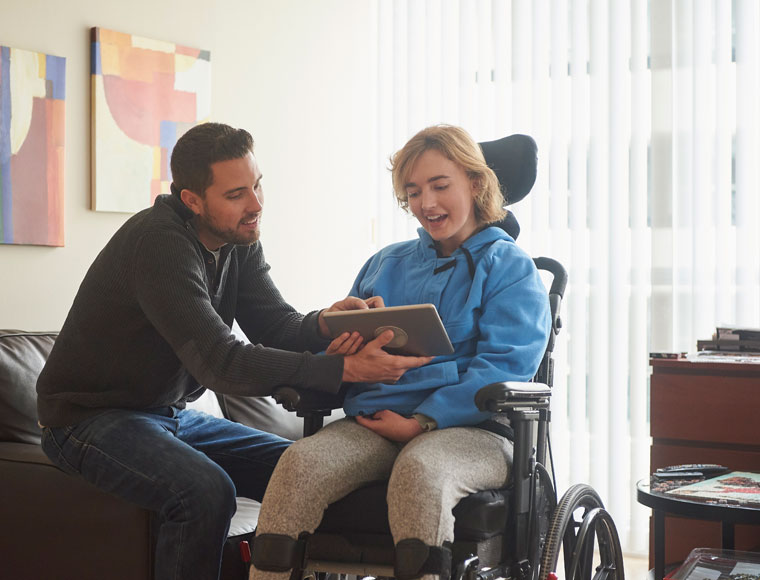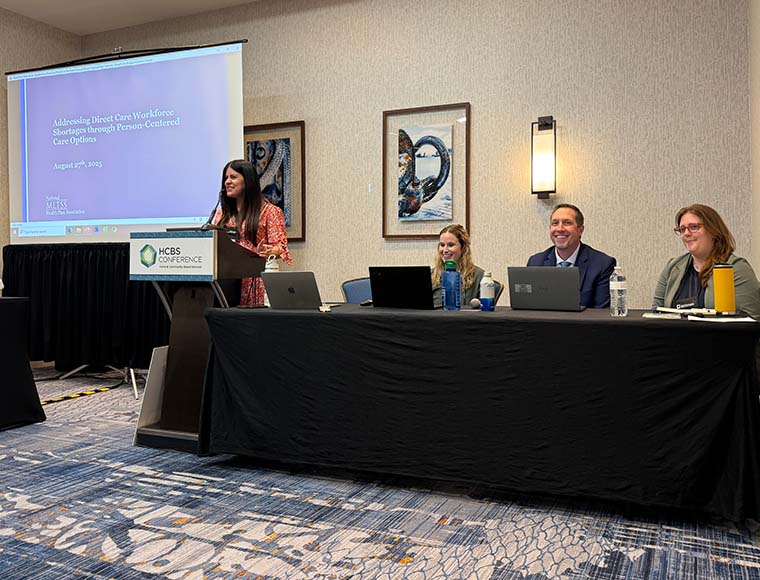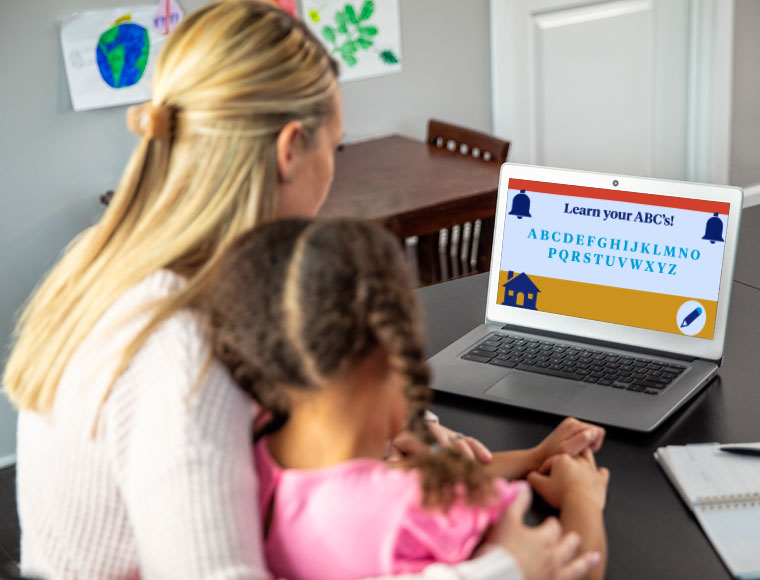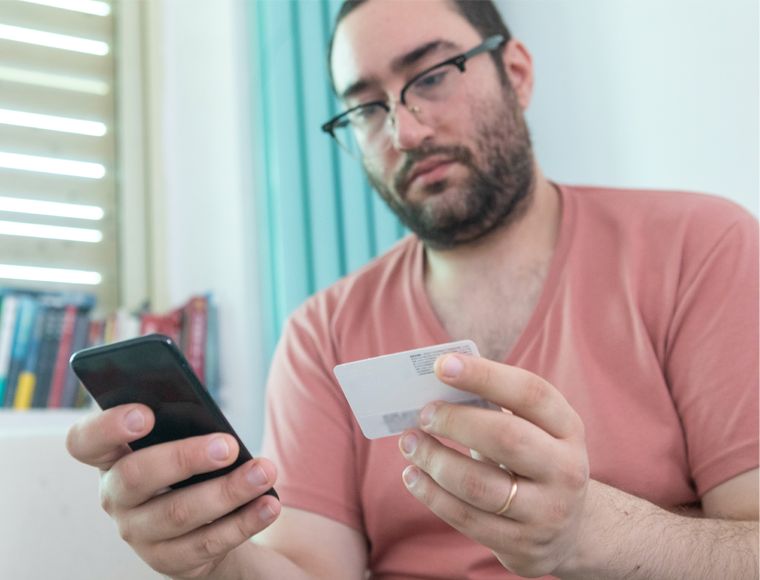How enabling technology is transforming home-based care
Globally, more than 2.5B people rely on one or more assistive products to support their daily lives, a number that is expected to rise to 3.5B by 2050.1 As aging populations grow and care needs become more complex, the impact of enabling technology is expanding rapidly, especially for individuals receiving long-term services and supports (LTSS). Enabling technology refers to tools and devices that enhance safety, independence and connectivity for individuals with disabilities or aging adults, many of whom wish to remain in their homes and communities rather than transition to institutional care.2 From smart locks to remote monitoring, these tools offer critical support for people managing chronic health conditions, mobility limitations or cognitive decline.
UnitedHealthcare Community & State is helping to support this rising need. Through its Medicaid managed care model, it supports the implementation of the Enabling Technology benefit, which connects members with customized, tech-based solutions to improve quality of life and reduce caregiver burden. By coordinating with contracted providers to conduct individualized assessments and deliver tailored tools, UnitedHealthcare is modernizing how home and community-based care is delivered.
Technology benefit
The Enabling Technology benefit aims to empower individuals to live with dignity and autonomy through the following range of supportive tools:
- Smart home assistants such as Amazon Alexa or Google Assistant can set reminders, manage routines and control lights or appliances with voice commands which help members maintain daily structure.
- Video doorbells and smart locks allow members to safely identify visitors and unlock doors remotely, which reduces fall risk and improves overall security by limiting unnecessary trips to the front door.
- Smart lighting systems respond to motion or voice, preventing injuries by eliminating the need to navigate dark rooms or search for light switches.
- Remote supports enable trained staff to monitor safety and wellness through passive sensors, while allowing members to connect to help instantly without needing constant in-person supervision.
Emerging tech-enabled care trends
UnitedHealthcare Community & State plays a pivotal role in enabling access to these tools. Care teams help coordinate referrals, streamline communication between providers and members and ensure timely delivery of the right devices for each individual’s needs. These supports align with the principles of aging in place, allowing adults to remain in their homes as they grow older, while also reflecting a larger shift toward person-centered, tech-enabled care models. This evolution is happening at a critical moment. The U.S. is facing a nationwide caregiver shortage, and more than $600B in unpaid caregiver labor is provided each year.3 For states trying to support aging adults and individuals with disabilities, effective solutions are urgently needed.
Medicaid programs, in particular, are under pressure. LTSS recipients make up 6% of Medicaid enrollees but account for nearly 40% of all program costs, highlighting the need for innovation in how services are delivered.4 Enabling technology represents a proactive approach to improving care access and reducing reliance on facility-based services.
Member impact
Early results from the Enabling Technology initiative show promising benefits for members. These tools are helping individuals reclaim a sense of safety, autonomy and dignity in their daily lives, especially those who live alone or require high levels of support.
For Susan, a 74-year-old woman with a below-the-knee amputation and limited mobility, even stepping outside was a challenge. Living alone and using a wheelchair, she longed for more independence. Through the Enabling Technology benefit, Susan received an automatic door opener controlled by voice, remote or smartphone. For the first time in three years, she can now leave her home on her own and sit on her porch, an act she describes as deeply joyful and empowering.
Other members, like Michael, who is paralyzed from the neck down due to a spinal cord injury, have found safety and freedom through smart locks and voice-activated doorbells. “Before, I had to leave my door unlocked or give caregivers a key,” he shared. “Now I can see who’s at my door and lock or unlock it by voice, right from my bed.” The technology has allowed him to feel secure and more self-sufficient, especially when home alone.
For Sarah, a member with multiple chronic conditions who depends on a Hoyer lift and power wheelchair, being alone at home once meant leaving her door unlocked for caregivers, a safety risk that caused daily anxiety. With a smart lock and Ring camera system, Sarah can now control who enters her home and speak directly to visitors. She describes the change as “life-changing,” allowing her to feel both secure and more independent.
Similarly, Ms. Morris, who was previously unable to unlock her door for visitors or emergency responders, received a custom smart home setup tailored to her needs and privacy preferences. By opting out of 24/7 monitoring and using only voice-controlled locks and video capability, she now feels safer and more in control. She can see visitors, unlock her door remotely and even call 911 with her Alexa device. “The tech works like a dream,” she said, calling it a game-changer for her ability to live at home safely.
These individual experiences highlight the powerful impact of enabling technology. By providing the right tools and supports, UnitedHealthcare is helping members age in place with confidence, offering peace of mind.
Redefining home-based care
UnitedHealthcare Community & State’s Enabling Technology initiative is redefining what home-based care can look like. By leveraging the flexibility of Medicaid managed care, the organization is able to respond quickly to member needs and pilot innovative tools that drive person-centered solutions. The initiative highlights the value of managed care: delivering better outcomes through coordination, adaptability and integration. In the face of workforce shortages and rising care costs, enabling technology offers a feasible way to improve safety, reduce institutional care reliance and ease the strain on families and caregivers.
Ultimately, this effort is about more than devices. It’s about empowering people, whether aging adults or individuals with disabilities, to live safely, confidently and independently in the place they call home.
Learn how UnitedHealthcare Community & State works to better understand the health needs of members with disabilities by visiting the Community & State website.
Enjoy this article? Get future Community & State insights delivered right to your inbox.
Sources
- Assistive technology (2024, January 2). World Health Organization.
- Enabling Technology (2025). Health Care Authority.
- Reinhard, S., et al. (2023, March). Valuing the Invaluable: 2023 Update. AARP.
- Chidambaram, P., & Burns, A. (2023, August 14). How Many People Use Medicaid Long-Term Services and Supports and How Much Does Medicaid Spend on Those People? KFF.











